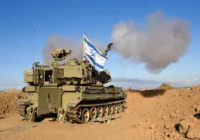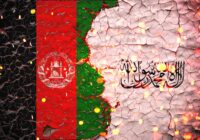After 15 months, the Israel–Hamas war that decimated the Gaza Strip and destabilized the Middle East has come to a ceasefire with a three-phase peace deal. The deal seeks to put a permanent end to the war and will see hostages held by Hamas in Gaza being exchanged for Palestinian prisoners held by Israel.
The deal is a significant relief to the Middle East region. But does it guarantee long-term peace, or is it bound to be a short-lived one as the White House’s change of guard leads to geopolitical re-adjustments?
The peace deal
The peace deal will occur in three phases, where the first two are critical.
The first phase will be 42 days long, during which there will be a complete ceasefire, the withdrawal of the Israeli Defense Forces (IDF), and the release of hostages from both sides. Hamas will release 33 hostages, and Israel will release almost 2,000 Palestinian detainees — Israel will thus free 30 prisoners for each of their civilians and 50 for each soldier. The IDF will also begin their withdrawal from Central Gaza — including the Netzarim Corridor that cuts off the North of Gaza.
Negotiations will begin 16 days later for the second phase, during which a permanent ceasefire is expected to come into effect, along with the complete withdrawal of the IDF. Further exchange of hostages and prisoners will also take place.
The third phase will likely involve returning the bodies of the dead hostages, the development of a reconstruction plan for Gaza, expansion of humanitarian aid, and opening of the borders.
The short peace/long peace gamble
At the outset, the deal may seem to be the beginning of rescuing the region from devastating conflict, but it requires a cautious and thorough examination. It’s too soon to call it a dawn.
The deal hangs with a small thread of greyish trust, which makes the deal a gamble between a short- or long-lived peace.
This is not the first time that such ambitious deals have taken place. Take the famous Oslo Accords. Signed in 1993 and 1995, they laid compelling deals on paper for a mutually negotiated two-state solution between Palestine and Israel. The Accords failed despite three negotiations, and their deadline was never met — thus converting a short-lived peace between Israelis and Palestinians into a long and strategic mistrust.
Similarly, despite the current ceasefire, various grey areas and short-sighted steps may once again blur the lines of peace in the Middle East region.
First: the balance of power
The power balance has been in a precarious situation since the fall of Syrian dictator Bashar Al-Assad. Sunni powers like Turkey, with its ambitions of restoring Ottoman glory, are seeking to expand their influence in Syria and the broader region.
The rise of Turkey as a strategic threat to Israel has pointedly been observed by the Nagel Committee established by Israel for the “Evaluation of the Defence Establishment Budget and the Balance of Power.” Led by former National Security Council head Yaakov Nagel, the committee noted that “Turkey could become a greater threat than Iran.”
Turkey could become a greater proxy power in the region by backing Syrian Islamic coalitions. However, Turkey’s relations with the US, especially in the Trump Administration, will moderate Turkey’s rising position in the region as far as Israeli security is concerned.
Second: Israel’s security concerns
The Oslo Accords, though later undermined by the mistrust between Israelis and Palestinians over its implementation, had called for the withdrawal of Israeli troops and for a Palestinian Authority (PA) or Palestinian National Authority (PNA) to be established.
Even Israelis, in the backdrop of the accords, thought that the PA would fight against Hamas and Islamic Jihadi organizations. Notably, the Oslo Accord established a joint patrol mechanism involving Israeli and Palestinian soldiers patrolling side by side to prevent terror attacks. In short, Oslo made a deal between economics and security: Israelis wanted security, and Palestinians wanted development.
As the deal and negotiators got closer to establishing the PA and Yasser Arafat as its President, mistrust began to form as Israelis became suspicious of Arafat’s actions as President of the PA. Arafat did not take any serious and practical steps to stop terror attacks on Israelis and sometimes even refused to arrest terrorists. On the contrary, Arafat was arming Palestinians in large numbers, which became alarming and gave the impression that Arafat did not intend to create any police institution or cooperate with Israelis to fulfill the agreement. From Israel’s perspective, this was seen as a breach and betrayal of trust.
However, the story was no different at the Palestinian end. They, too, became equally suspicious when Israelis ordered the redeployment of forces and blocked roads between Palestinian cities. Even a free passage connecting the West Bank and Gaza was never materialized. These actions, which Israelis justified as “security measures” or “security concerns,” were seen as their attempt to dominate Palestinians, thus sowing the seeds of betrayal in their hearts.
Therefore, peace is precarious if grey zones of the agreement like post-conflict reconstruction and establishment of governing bodies are not addressed. Another question mark is the possibility of the complete withdrawal of Israeli troops from strategic points such as the Philadelphi Corridor, which Israel considers a security nightmare. In the 2000s, this corridor was used to smuggle arms through the Egyptian borders, which, if not checked could benefit Hamas in militarizing them.
These two strategic and political questions are still unanswered. In the agreement, there is no mention of who will govern Gaza, and the US-Israel coalition is pushing hard not to let Hamas govern Gaza again. A recent statement by incumbent US National Security Advisor Mike Waltz mentioned, “Hamas will never govern Gaza again.” This statement held some weight, considering Israel has eliminated Hamas’ top leadership, including Ismail Haniyeh, Yahya Sinwar, and Mohammed Deif. Strikes in the past few weeks have also targeted lower-ranking Hamas administrators in Gaza.
However, to great surprise, Hamas recently re-emerged from hiding in the wake of the ceasefire. They were seen clearing the rubble and guarding the hundreds of newly arrived humanitarian aid trucks in Gaza to prevent looting. According to Reuters, on January 21, Hamas blue-uniformed police and gunmen, who were kept off the streets by Israeli airstrikes, were seen stationed in neighborhoods throughout the Strip.
In the first round of prisoner swaps held on January 25, 200 Palestinians were freed — many of whom were militants. Though those convicted of killing Israelis are being deported, others could have a potential bearing in helping Hamas revive.
Presently, Israel has launched deadly air raids in an Operation called “Iron Wall” in Jenin in the West Bank. They have bulldozed infrastructure they claim to be “terror infrastructure sites” in an attempt to ‘dismantle militant camps to prevent any revival of terror taking place’ in and around Israel. This move has displaced 2,000 families and killed at least 10 people who were stationed in a refugee camp in Jenin. Before the Israeli action, the Palestinians had also carried out a weeks-long operation to reassert control of the city of Jenin and its refugee camp.
If Operation Iron Wall intensifies, it could further complicate negotiations in the ceasefire agreement.
In fact, if all these politico-strategic questions remain unsolved in the 2025 peace deal, it could very well reverse the status quo and push both parties to the brink of conflict again — creating another “Oslo Moment.”
Third: Trump’s US in the Middle East
Trump’s first term saw a pro-Israel, anti-Iran policy and a vision of strategic cooperation in the Middle East, especially with Saudi Arabia. His second term would look more or less the same but with a slight change, i.e., cautiously assertive by increasing “deft diplomacy” instead of following a dynamic approach in the Middle East like his first term.
US’ deft diplomacy with Turkey will help moderate the Syrian situation and keep a check on Ankara’s behavior against Israel. It will also help rework ambitious strategic and economic projects with the UAE and Saudi Arabia.
However, there is a caveat in this form of diplomacy — it might further isolate Iran.
If Trump decides to bring back the maximum pressure campaign and restore sanctions against Iran, and if Tehran’s regional influence takes further hits, then it might stoke fear of disturbances in the region. This would not only increase the chances of the Turkey-Iran proxy conflict in Syria, but also reactivate its grey zone warfare with Israel, complicating the ceasefire agreement.
There is a chance of optimism in this deal if both parties are ready to maintain the trust factor and work intensely on post-conflict governance. But what makes this deal a gamble is the looming question: How much are both parties prepared to accept and give in?
[Yaamini Gupta edited this piece.]
The views expressed in this article are the author’s own and do not necessarily reflect Fair Observer’s editorial policy.
Support Fair Observer
We rely on your support for our independence, diversity and quality.
For more than 10 years, Fair Observer has been free, fair and independent. No billionaire owns us, no advertisers control us. We are a reader-supported nonprofit. Unlike many other publications, we keep our content free for readers regardless of where they live or whether they can afford to pay. We have no paywalls and no ads.
In the post-truth era of fake news, echo chambers and filter bubbles, we publish a plurality of perspectives from around the world. Anyone can publish with us, but everyone goes through a rigorous editorial process. So, you get fact-checked, well-reasoned content instead of noise.
We publish 2,500+ voices from 90+ countries. We also conduct education and training programs
on subjects ranging from digital media and journalism to writing and critical thinking. This
doesn’t come cheap. Servers, editors, trainers and web developers cost
money.
Please consider supporting us on a regular basis as a recurring donor or a
sustaining member.
Will you support FO’s journalism?
We rely on your support for our independence, diversity and quality.









Comment